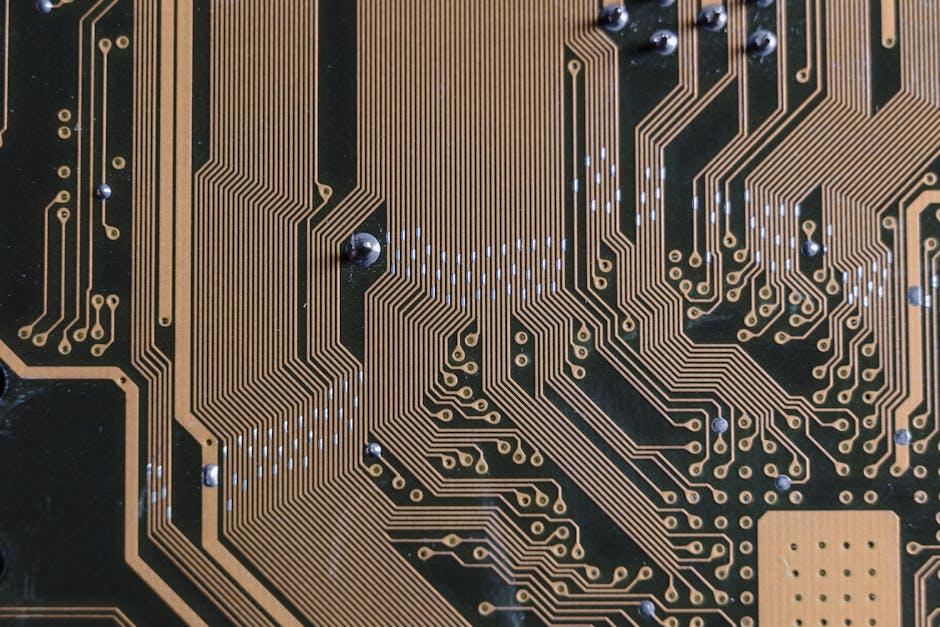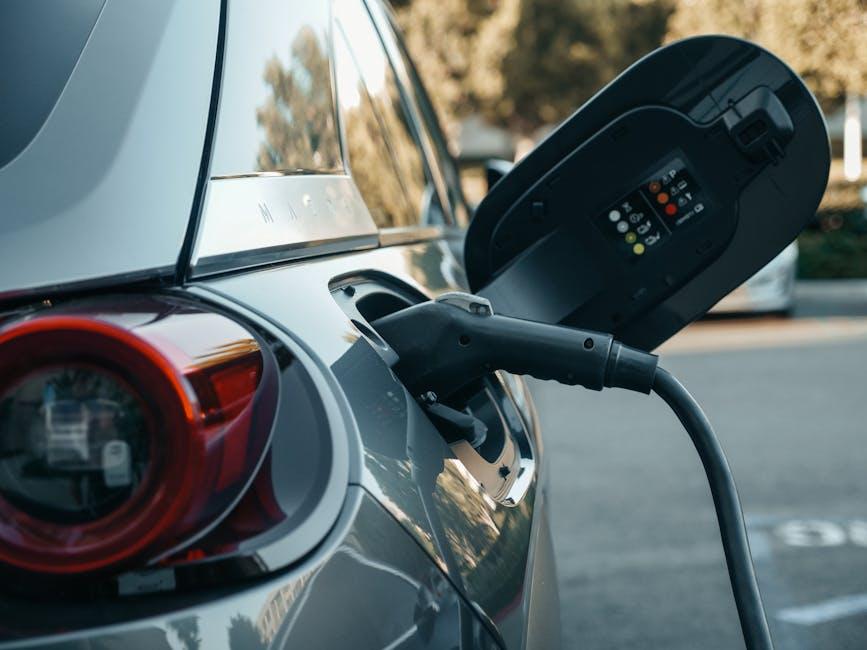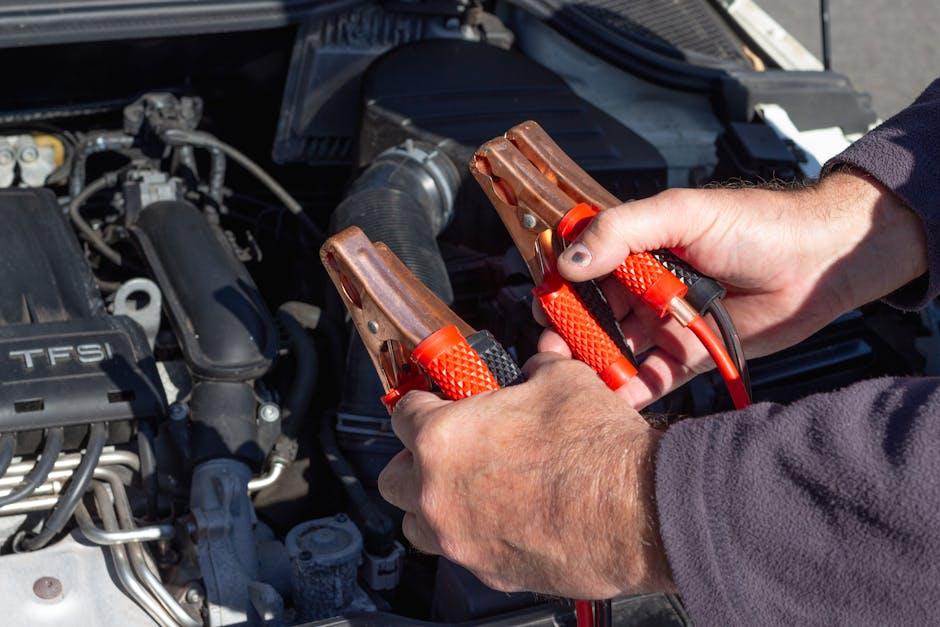Beneath the sleek exterior of every modern car lies a complex web of wires, sensors, and circuits—an electrical system that powers everything from the headlights to the dashboard display. Keeping this invisible network in top shape is essential not just for your vehicle’s performance, but also for your safety on the road. Whether you’re a seasoned gearhead or a casual driver, understanding how to maintain your car’s electrical system can save you from unexpected breakdowns and costly repairs. In this article, we’ll explore practical tips and essential practices to help you keep your car’s electric heart beating strong.
Table of Contents
- Understanding Your Car’s Electrical System Components
- Routine Inspection Techniques for Electrical Connections
- Preventive Measures to Avoid Battery and Alternator Issues
- Choosing the Right Tools for Electrical System Maintenance
- Step-by-Step Guide to Cleaning and Protecting Electrical Contacts
- When to Seek Professional Help for Complex Electrical Problems
- Q&A
- In Summary

Understanding Your Car’s Electrical System Components
At the heart of your vehicle lies a complex network of electrical components that work harmoniously to keep your car running smoothly. Key elements like the battery, alternator, and fuse box form the backbone of this system. Without a strong battery, your engine won’t start; without an efficient alternator, your battery won’t stay charged, and without well-maintained fuses, essential circuits can fail unexpectedly. Each component serves a critical function, transforming electrical energy into power that controls everything from your headlights to the onboard computer.
Understanding how these components interact can help you identify potential issues early. Here’s a quick look at some vital parts and their roles:
- Battery: Stores electrical energy and delivers it for starting and operating accessories.
- Alternator: Recharges the battery while the engine runs and powers electrical systems.
- Starter motor: Uses electrical power to turn over the engine.
- Fuses and relays: Protect circuits and control electrical flow.
- Wiring harness: Connects and routes electrical signals throughout the car.
| Component | Function | Common Signs of Failure |
|---|---|---|
| Battery | Power storage | Slow engine crank, dim lights |
| Alternator | Battery charging | Battery warning light, electrical drains |
| Fuses | Circuit protection | Non-functional accessories |

Routine Inspection Techniques for Electrical Connections
Regularly examining your car’s electrical connections is essential in preventing unexpected failures. Start by visually inspecting all visible wiring for signs of corrosion, fraying, or discoloration. Gently wiggle connectors and terminals to ensure they are snug and free of rust or dirt buildup. Using a multimeter to check for continuity and voltage drops can reveal hidden faults that a simple visual check might miss. Remember, moisture is one of the biggest enemies—look for any signs of water ingress that could accelerate corrosion.
When hands-on inspection doesn’t reveal the full picture, incorporate these practical techniques into your routine:
- Use dielectric grease on terminals to improve connection quality and reduce oxidation.
- Employ a thermal camera or infrared thermometer to detect hot spots indicating poor connections or overloads.
- Clean contacts with electrical contact cleaner before reconnecting to ensure optimal conductivity.
- Secure loose wires using cable ties or clamps to prevent wear caused by vibration.
| Issue | Inspection Tip | Solution |
|---|---|---|
| Corroded Terminal | Look for greenish or white powdery residue | Clean and apply dielectric grease |
| Loose Connection | Wiggle connector to check stability | Re-seat or replace connector |
| Overheating Wire | Use thermal scan for hot spots | Inspect load; repair or upgrade wiring |

Preventive Measures to Avoid Battery and Alternator Issues
One key strategy to extend the lifespan of your car’s battery and alternator is to develop a regular maintenance routine. This includes frequent inspections for signs of corrosion on battery terminals and connectors, as even minor rust can cause electrical resistance. Additionally, keep the battery securely mounted to prevent vibrations that might damage internal components. Avoid leaving lights or electronics on when the engine isn’t running, as this can quickly drain the battery.
Another proactive approach is to monitor the charging system carefully. Make it a habit to:
- Check the alternator belt for cracks or excessive wear and replace it if needed
- Ensure all electrical connections are tight and free of dirt or moisture
- Test the battery’s voltage and charging rate periodically, especially before long trips
Incorporating these steps into your vehicle care routine can prevent costly repairs and keep your car’s electrical system running smoothly.
| Preventive Action | Frequency | Benefit |
|---|---|---|
| Battery terminal cleaning | Monthly | Reduces corrosion build-up |
| Alternator belt inspection | Every 6 months | Prevents belt failure |
| Voltage and charging system test | Annually | Ensures optimal charging |

Choosing the Right Tools for Electrical System Maintenance
Maintaining your car’s electrical system begins with equipping yourself with the right tools that blend precision and reliability. Essential items like a multimeter help diagnose voltage, current, and resistance, offering crucial insights into circuit health. Additionally, insulated screwdrivers and wire strippers ensure safety when dealing with live wires. Choosing tools that combine ergonomic comfort with robust performance can significantly streamline troubleshooting and repairs, turning complex tasks into manageable ones.
When selecting your toolkit, consider not only basic instruments but also specialized gadgets designed for automotive systems. For instance, a circuit tester can quickly identify issues without full disassembly, while alligator clips and connector kits facilitate secure temporary connections. Below is a quick guide to essential tools that every car owner should have on hand:
| Tool | Purpose | Tip |
|---|---|---|
| Multimeter | Measuring electrical values | Use auto-range for ease |
| Insulated Screwdrivers | Safe terminal handling | Choose comfortable grips |
| Circuit Tester | Quick fault detection | Test before disconnecting wires |
| Wire Strippers | Removing insulation cleanly | Match cutter size to wire gauge |

Step-by-Step Guide to Cleaning and Protecting Electrical Contacts
Maintaining clean electrical contacts in your vehicle is crucial for consistent performance and longevity. Start by disconnecting the battery to ensure safety, then gently remove any connectors or terminals you plan to service. Use a soft-bristled brush or a specialized electrical contact cleaner to dislodge dirt, oxidation, and corrosion without damaging delicate components. After cleaning, inspect contacts carefully for pitting or wear that might require replacement. As a preventive measure, apply a thin layer of dielectric grease to repel moisture and further protect against corrosion, ensuring seamless electrical flow.
Incorporate regular checks of the most critical connectors, such as those linked to the battery, alternator, and fuse box, into your maintenance routine. Keep a small toolkit handy with essentials like a contact cleaner spray, fine sandpaper, and dielectric grease for quick touch-ups. Here’s a quick reference table to identify common symptoms of failing electrical contacts and the corresponding solutions:
| Symptom | Possible Cause | Recommended Action |
|---|---|---|
| Intermittent lighting | Corroded contact points | Clean and apply dielectric grease |
| Engine starting issues | Loose battery terminals | Tighten and inspect terminals |
| Electrical shorts | Damaged wiring insulation | Repair or replace wiring |

When to Seek Professional Help for Complex Electrical Problems
When electrical issues in your car extend beyond flickering dashboard lights or a dead battery, it’s a clear signal to consult a professional. Complex problems like intermittent power failures, unexplained fuse blowouts, or malfunctioning central control modules require diagnostic tools and expertise that go beyond DIY fixes. Attempting repairs without proper knowledge may not only fail to solve the problem but could also inadvertently damage sensitive components, leading to more costly repairs down the road.
Here are some common signs that should prompt a visit to an automotive electrician:
- Persistent electrical shorts that cause frequent system resets
- Inconsistent operation of multiple electronic systems or sensors
- Unusual smells or smoke coming from the wiring harness or fuse box
- Complex intermittent faults that defy simple troubleshooting
- Failed compliance with vehicle safety or emission electrical tests
| Symptom | Potential Cause | Recommended Action |
|---|---|---|
| Dashboard warning lights flicker | Loose wiring connections | Professional inspection and secure wiring |
| Frequent blown fuses | Short circuits or faulty components | Comprehensive electrical diagnosis |
| Non-responsive electronic control unit | Critical system failure or software glitch | Advanced diagnostic and repair tools |
Q&A
Q: Why is maintaining my car’s electrical system important?
A: Your car’s electrical system powers essential components like the ignition, lights, radio, and sensors. Keeping it in good shape ensures reliable starts, clear visibility, and smooth operation of tech features. Neglecting it can lead to unexpected breakdowns or costly repairs.
Q: What are the most common signs of electrical system problems?
A: Look out for dimming or flickering lights, sluggish or non-starting engine, warning lights on the dashboard, malfunctioning electronics, or strange noises like clicking when turning the key. These clues can indicate battery issues, alternator troubles, or wiring faults.
Q: How often should I check my car’s battery and electrical connections?
A: A quick inspection every few months is ideal. Check for corrosion on battery terminals, loose wires, and ensure connections are tight. Cleaning terminals and applying a protective spray can help prevent corrosion and maintain conductivity.
Q: Can I perform electrical maintenance myself, or should I see a professional?
A: Basic tasks like cleaning terminals, checking fuses, and inspecting battery cables can be done at home with some care and the right tools. However, diagnosing complex issues or dealing with wiring repairs is best left to qualified mechanics to avoid safety risks.
Q: What role does the alternator play, and how can I tell if it’s failing?
A: The alternator charges your battery while the engine runs. Signs of failure include battery warning lights on the dash, dim lights, strange noises, or a battery that keeps dying despite replacement. If you notice these, have your alternator tested promptly.
Q: Are there daily habits that help maintain the electrical system?
A: Yes! Turn off all lights and accessories when the engine is off to avoid draining the battery. Also, avoid frequent short trips that don’t allow the battery to recharge fully, and keep an eye on dashboard warning lights.
Q: What should I do if my car’s electrical system suddenly fails?
A: Stay calm and safely pull over. Try jump-starting the battery if you suspect it’s dead. If problems persist, call roadside assistance or have your car towed to a trusted mechanic for a thorough diagnosis.
Q: How does weather affect my car’s electrical system?
A: Extreme cold can reduce battery performance, while moisture can cause corrosion or short-circuits. Parking in a garage, using battery warmers in winter, and keeping electrical components dry can help protect the system.
Q: Can aftermarket upgrades impact my car’s electrical health?
A: Yes. Adding high-powered audio systems, lighting, or other devices can strain your electrical system. Ensure upgrades are professionally installed and compatible with your car’s capacity to prevent overload and damage.
Q: What’s the takeaway for maintaining a healthy electrical system?
A: Regular inspections, clean connections, mindful use of electrical components, and prompt professional check-ups at any sign of trouble help keep your car’s electrical system humming smoothly—powering your drive, day after day.
In Summary
Maintaining your car’s electrical system is like tuning the heartbeat of your vehicle—subtle care today can prevent a breakdown tomorrow. By staying attentive to wiring, connections, and battery health, you ensure that every spark and signal flows seamlessly, powering your journeys with confidence and efficiency. Remember, a well-maintained electrical system doesn’t just keep your car running; it keeps you moving forward, ready for every road ahead.

